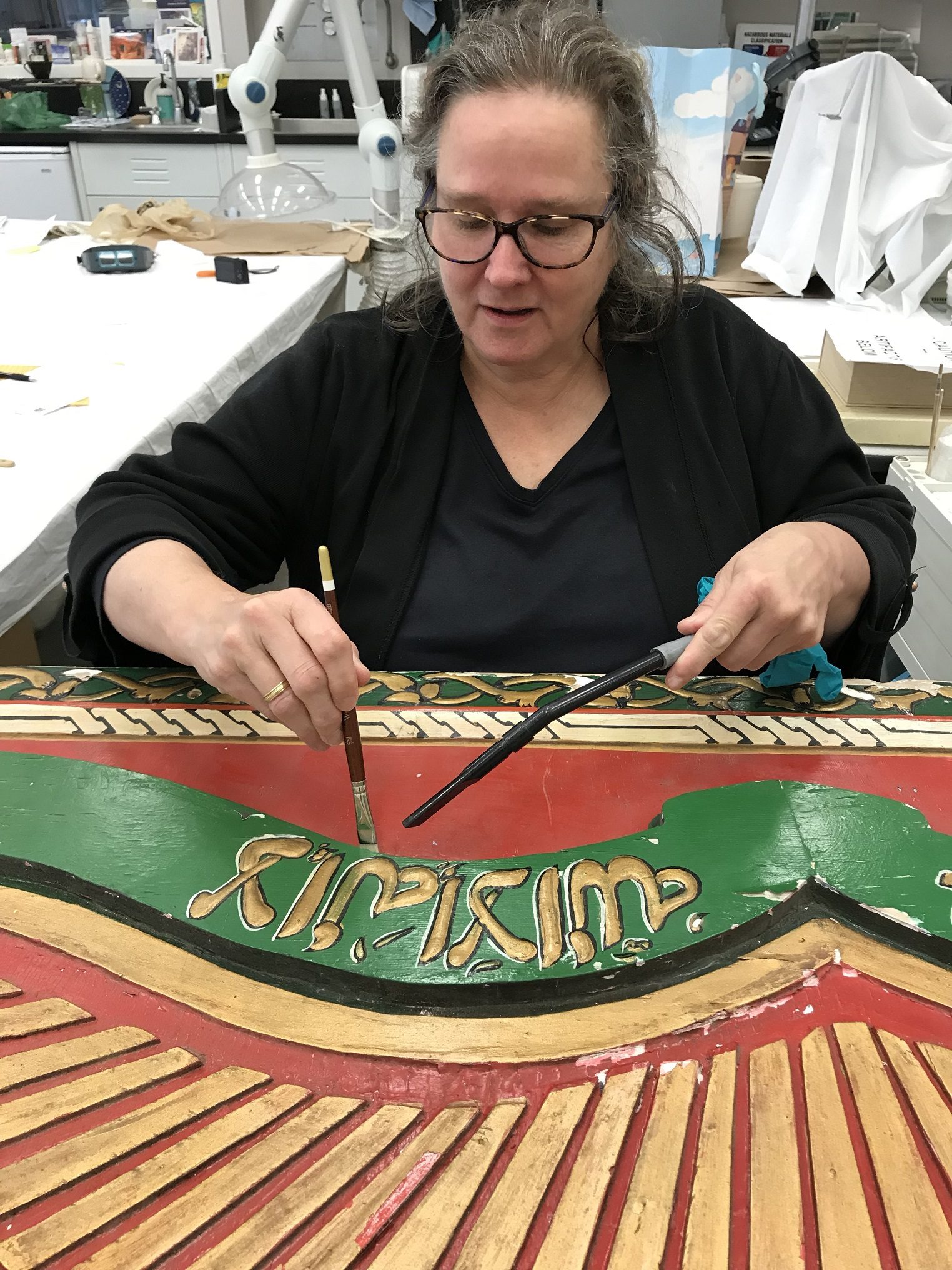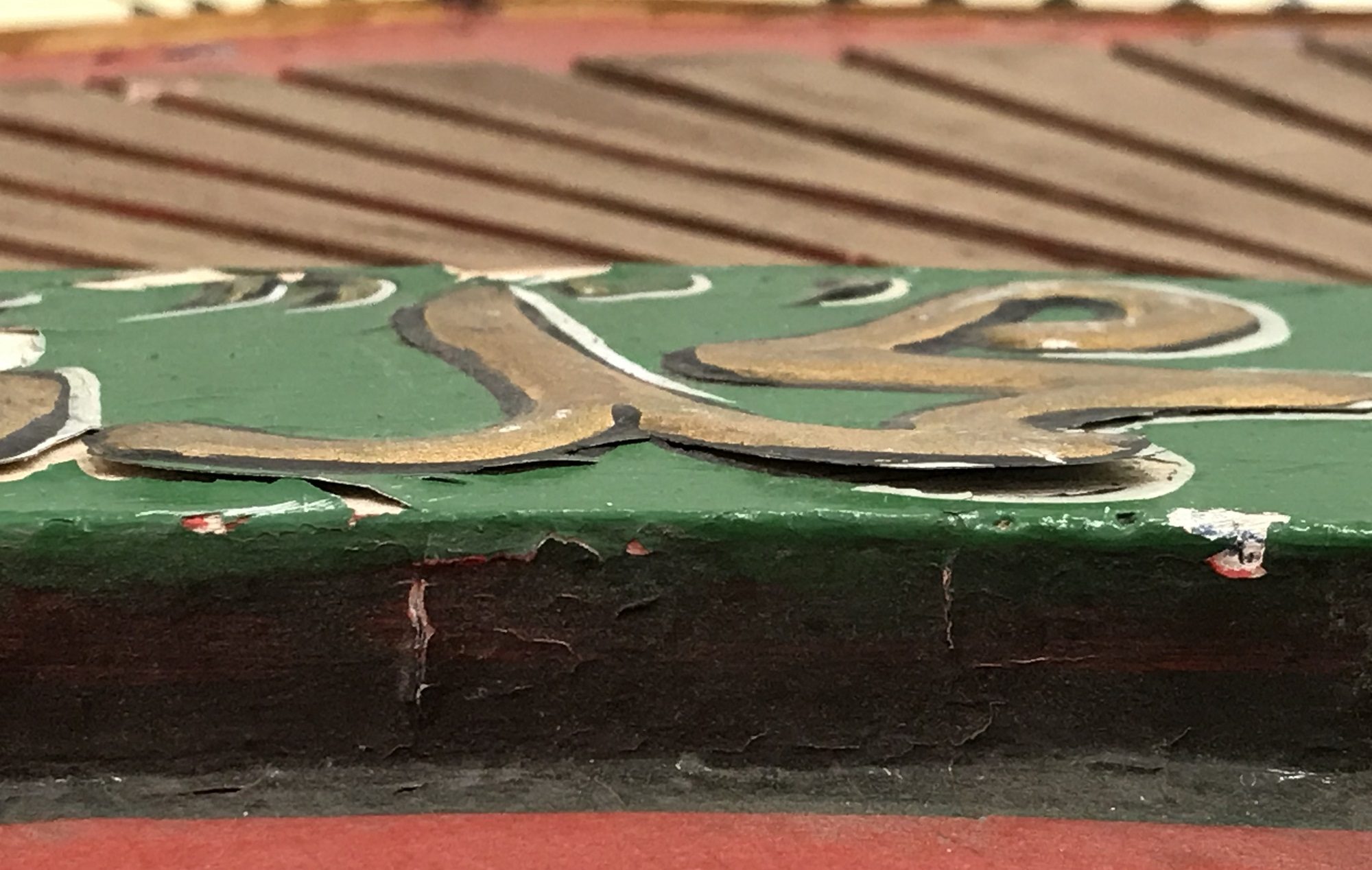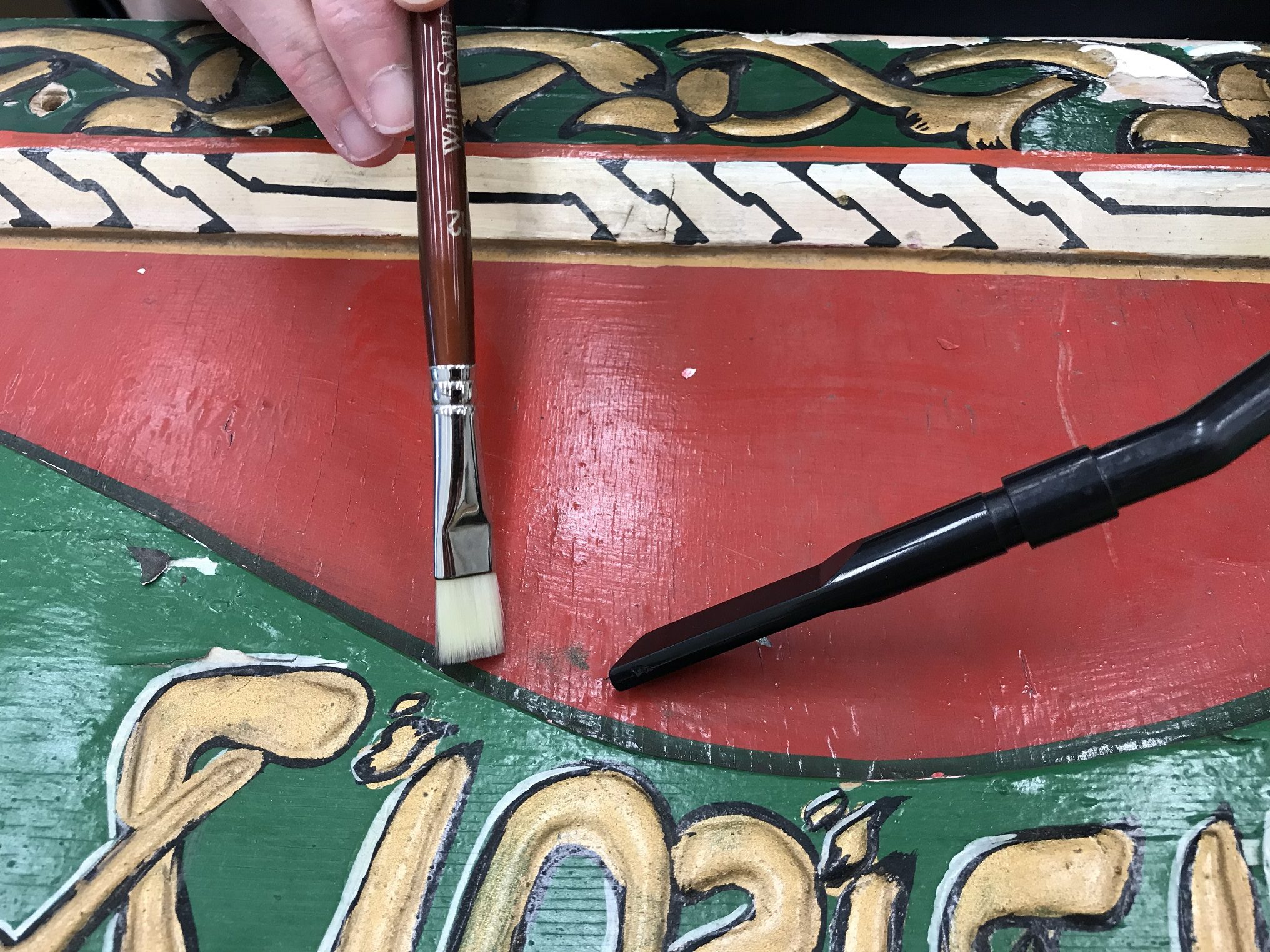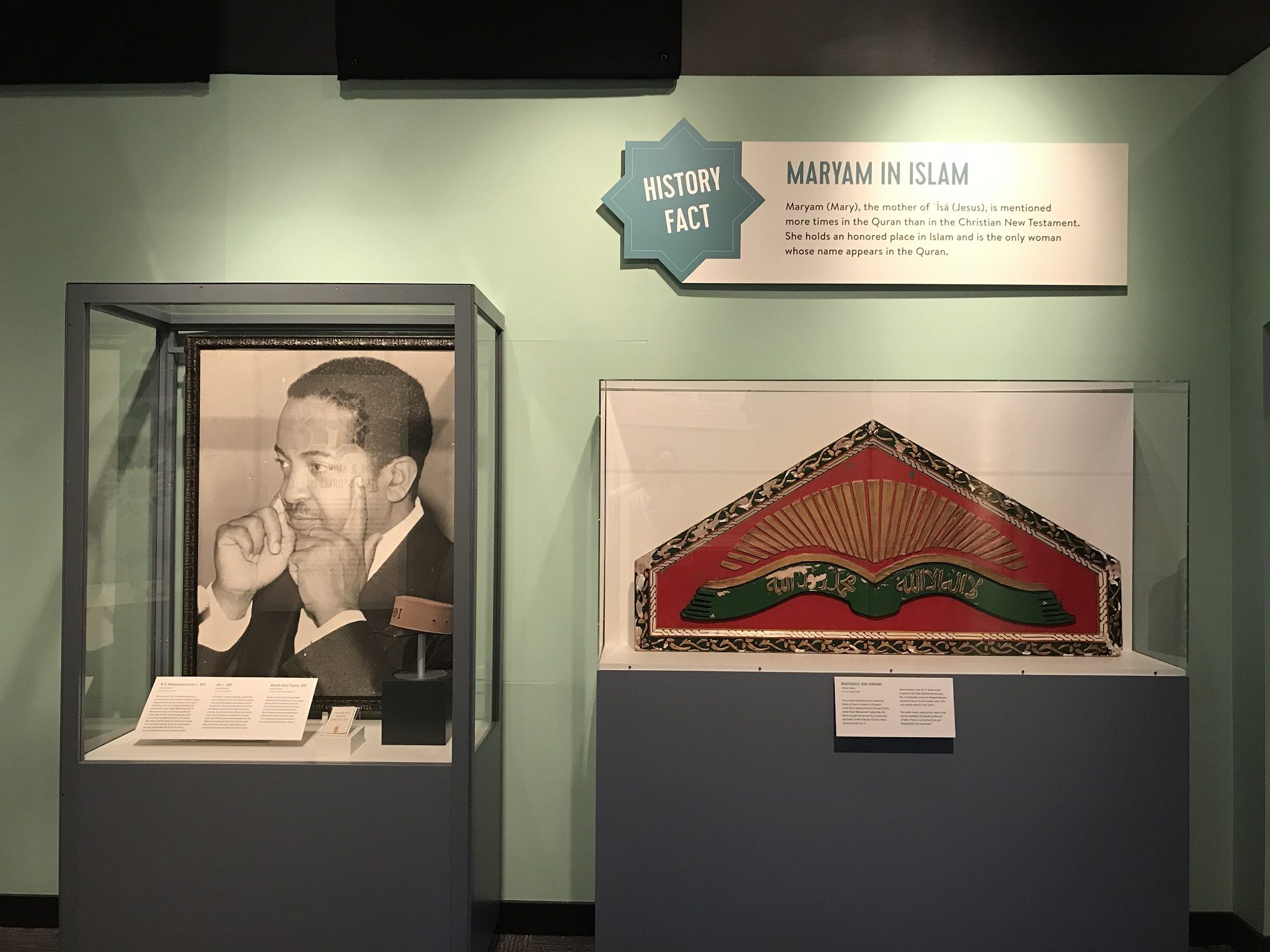In this blog post, learn about how a painted mantelpiece was prepared before it went on display in our exhibition American Medina: Stories of Muslim Chicago, from cleaning and repair in the conservation lab to being installed in the gallery.
Any object that is considered for display in an exhibition, whether from the Chicago History Museum’s collection or a special loan, is brought to the conservation lab to be assessed for its current condition and any treatment needs, and to establish the best parameters for its display. This assessment is an important and necessary step in the exhibition process as it ensures that each object is stable enough to withstand the rigors of display and are not damaged or harmed as a result.

CHM conservator Holly Lundberg carefully cleans the mantelpiece. All photographs by CHM staff.
Most objects require some level of preparation and conservation treatment such as cleaning, stabilization, and/or repair, and the creation of a custom mount before they can be displayed in a safe and appropriate way. Upon examination of this painted wood mantelpiece, which MarQ Shaheer loaned to the Museum for our exhibition American Medina: Stories of Muslim Chicago, CHM conservator Holly Lundberg noted that the paint and ground layers were cracked, lifting, and actively flaking from the wood substrate, and significant losses had occurred in spots overall. The piece was also covered with a layer of surface dust, dirt, and grime.

A closeup view of paint that has lifted from the wood substrate of the mantelpiece.
To stabilize areas of loose and actively flaking paint, Lundberg used a syringe to inject a conservation grade adhesive between cracked, loose, and lifting areas of paint and ground and the wood substrate to consolidate them. And, where necessary, she used a small heat-spatula and a barrier layer of double-sided silicone release film to soften and lay down lifting paint fragments. Consolidation of the unstable paint and ground layers took several weeks to complete, and in some spots more than one application of the consolidant was required.

A closeup view of Lundberg using a soft-bristle brush to sweep dust toward a low-suction vacuum.
Once the surface layers were stabilized, Lundberg was able to use soft, natural-bristle artists brushes and a low-suction vacuum to remove any loosely adherent dust and dirt from the surface, and lightly moistened cotton swabs to remove dirt and grime.

At right, the mantelpiece on display in American Medina: Stories of Muslim Chicago, courtesy of MarQ Shaheer.
The decoratively painted wood mantelpiece ornamented the Nation of Islam (NOI) mosque in Chicago’s South Shore neighborhood in the early 1970s. Under Elijah Muhammad’s leadership, the NOI bought the former Saints Constantine and Helen Greek Orthodox Church. After his father died, W. D. Mohammed renamed it the Elijah Muhammad Mosque, No. 2. Eventually, it became Mosque Maryam, named for Jesus Christ’s mother, who is the only woman named in the Quran. The Arabic words, reading from right to left, are the shahādah, the Muslim profession of faith: “There is no God but God, and Muhammad is his messenger.”